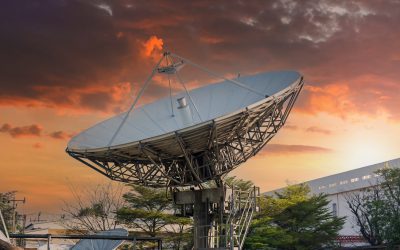Operating a remote-controlled radio station offers amateur radio enthusiasts unparalleled flexibility. Whether you’re traveling, facing local interference, or seeking to manage your station from afar, setting up a remote-controlled system can enhance your amateur radio experience. This guide provides a comprehensive walkthrough for installing a remote-controlled radio station, ensuring reliable and efficient operation.
1. Understanding Remote-Controlled Radio Stations
A remote-controlled radio station allows operators to manage their amateur radio equipment from a distant location via the internet. This setup is particularly beneficial for those who wish to:
-
Operate from locations with limited radio access.
-
Avoid local interference.
-
Access their station while traveling.
By leveraging modern technology, operators can maintain control over their equipment, ensuring consistent communication capabilities regardless of their physical location.
2. Essential Components for Setup
To establish a functional remote-controlled radio station, you’ll need the following components:
-
Transceiver: A radio capable of remote operation.
-
Computer or Raspberry Pi: Acts as the intermediary between the transceiver and the internet.
-
Internet Connection: A stable and high-speed connection is crucial for seamless operation.
-
Remote Control Software: Facilitates the control of your radio over the internet.
-
Audio Interface: Handles audio input and output between the radio and the computer.
-
Power Control Devices: Allows remote powering on/off of equipment.
3. Setting Up the Hardware
a. Connecting the Transceiver
Begin by connecting your transceiver to the computer or Raspberry Pi using the appropriate interface cables. Ensure that the connections are secure and that the devices recognize each other.
b. Configuring the Audio Interface
An audio interface is essential for managing the sound between your radio and computer. Devices like the West Mountain Radio Plug and Play provide seamless integration, offering both audio and data connections.
c. Establishing Power Control
Implementing smart plugs, such as the TPLink Kasa Smart WiFi Outlet, allows you to remotely control the power supply to your equipment. This feature is particularly useful for rebooting devices or turning them off when not in use.
4. Installing and Configuring Software
a. Choosing the Right Software
Several software options are available for remote radio operation:
-
Simple Ham Radio Remote (SimpleHRR): A free solution that runs on Raspberry Pi, offering a web-based interface for radio control.
-
Ham Radio Deluxe (HRD): A comprehensive suite that includes remote control capabilities, suitable for various transceivers.
b. Installation Process
For SimpleHRR:
- Download the SimpleHRR image and flash it onto a microSD card.
- Insert the microSD card into the Raspberry Pi.
- Connect the Raspberry Pi to your network via Ethernet.
- Power on the Raspberry Pi and transceiver.
- Access the web interface using the Raspberry Pi’s IP address.
- Configure your radio settings and credentials.
For HRD:
- Install HRD on both the local and remote computers.
- Configure the HRD Remote Server on the remote computer.
- Set up the necessary COM ports and network settings.
- Ensure that the firewall allows the required ports for communication
5. Network Configuration
a. Static IP Address
Assigning a static IP address to your remote station ensures consistent access. This step is crucial for maintaining a reliable connection.
b. Port Forwarding
Configure your router to forward the necessary ports to your remote station. This setup allows external devices to communicate with your station over the internet.
c. Dynamic DNS (Optional)
If your internet service provider assigns dynamic IP addresses, consider using a Dynamic DNS service. This service maps a domain name to your changing IP address, ensuring continuous access.
6. Testing and Troubleshooting
a. Initial Testing
Before relying on your remote station, conduct thorough testing:
-
Verify audio transmission and reception.
-
Test control commands (frequency changes, mode switches).
-
Ensure power control functions correctly.
b. Common Issues
-
Connectivity Problems: Check network settings, firewall configurations, and ensure that the correct ports are open.
-
Audio Distortion: Adjust audio levels and verify the integrity of audio cables.
-
Software Errors: Ensure that all software is up to date and compatible with your hardware.
7. Best Practices
-
Regular Maintenance: Periodically check all connections and update software to maintain optimal performance.
-
Security Measures: Implement strong passwords and, if possible, use VPNs to secure your remote connections.
-
Documentation: Keep detailed records of your setup, including network configurations and software settings, to facilitate troubleshooting.
Setting up a remote-controlled radio station can significantly enhance your amateur radio operations, offering flexibility and convenience. By following this guide, you’ll be well-equipped to establish a reliable and efficient remote station. Remember, the key to success lies in meticulous planning, thorough testing, and ongoing




